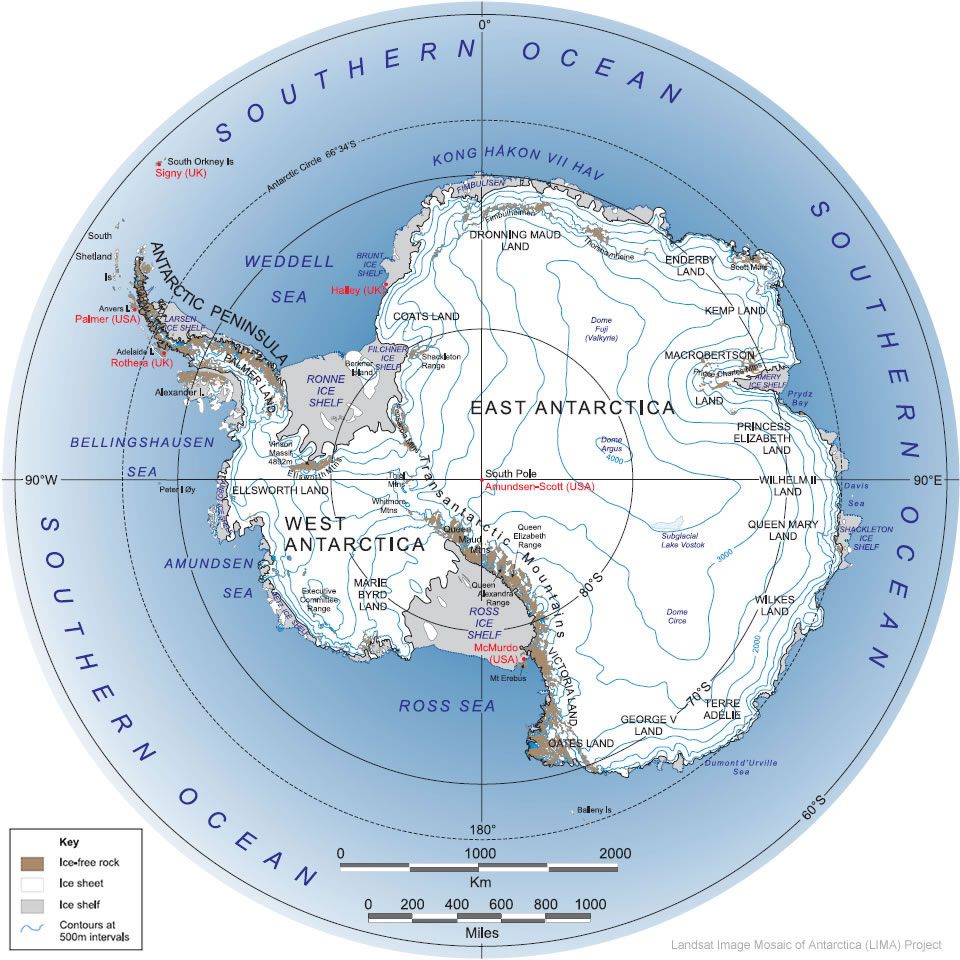Iceberg to break off from Antarctica
February 27, 2019 | Expert Insights
A dangerous looking fracture in the Brunt Ice Shelf is threatening to break out an iceberg almost twice the size of New York City. The crack is moving north towards the McDonald Ice Rumples and Halloween crack.
Background
Iceberg calving is a normal, natural process that helps maintain Antarctica's net land mass. Floating ice shelves fringe the coasts of the continent, growing upward and outward as heavy snows fall. NASA notes that calving — when ice breaks from the edge of a glacier — is a regular phenomenon, but that the changes seen recently are not regular to the ice shelf.
The discovery of the large iceberg that could detach from the continent has raised concerns for researchers at the British Antarctic Survey’s Halley Station, which is a major base that typically operates year-round. While the base has been rebuilt and relocated previously, uncertainty in the ice there has already caused the station to be closed down twice in recent years.

Analysis
An iceberg twice the size of New York City is poised to break away from the Brunt Ice Shelf in Antarctica, sparking safety concerns for scientists in the area. The iceberg could have an area spanning 660 square miles and could represent the largest break off since 1915, when scientists first began studying the area.
The glacial flaws that are 2.5 miles apart, may take a few days or a few months for them meet and cause the break-off. Although the iceberg would be the biggest to break off from the Brunt ice shelf, it will not be the largest to orbit Antarctica.
It is not the size that makes it noteworthy but the consequences of the break off on the ice shelf that worries scientists. Climate change might be destabilizing other ice shelves like Brunt, this movement could jeopardize the critical scientific research human residents have conducted there for more than 60 years.
NASA explains that calving is a perfectly normal process in an ice shelf's life cycle, but it is the unfamiliarity of these recent changes that are disconcerting. Since Ernest Shackleton surveyed the area in 1915, it has only ever evolved slowly. Now, things are speeding up.
British scientists have been studying geology, glaciology and the atmosphere at the Halley research station located on the Brunt Ice Shelf since 1956. The lab has been torn down and rebuilt many times over the decades, and took its most recent form in 2012 when the Halley VI Research Station - a mobile, modular structure - delivered its first scientific data.
That same year, satellite imagery spotted a chasm in the ice shelf - officially called Chasm 1, was growing for the first time in three decades. The chasm would’ve eventually marooned Halley VI forcing scientists to relocate the station further inland to ensure safety. Chasm 1 along with the Halloween crack, which was first spotted in October 2016, could cause the breaking of the iceberg that would have greater consequences for the stability of the Brunt ice shelf.
“Scientists have only been studying glacier shelves for a little over 100 years, so it's difficult to say whether icebergs are calving at a higher rate at this location on the Brunt Ice Shelf”, said Helen Fricker, a glaciologist at the Scripps Institution of Oceanography.
Counterpoint
There is no definite proof that climate change is the cause for the calving of the ice shelf. That isn’t to say that Antarctica isn’t undergoing rapid changes due to climate change. Research shows that on the west side of the continent, where waters are warmer than those surrounding Brunt, the ice shelves are thinning from below. In that region, scientists say climate change has a clear role.
Assessment
Our assessment is that the iceberg breakaway could take a couple of months during which the scientists working at the research station will be able to shift their site. The worry of destabilization still looms over the fact that there isn’t any conclusive data pointing towards the integrity of the ice shelf. Although climate change has been affecting the rapid changes in Antarctica, there isn’t sufficient proof that calving was only caused by climate change.








Comments